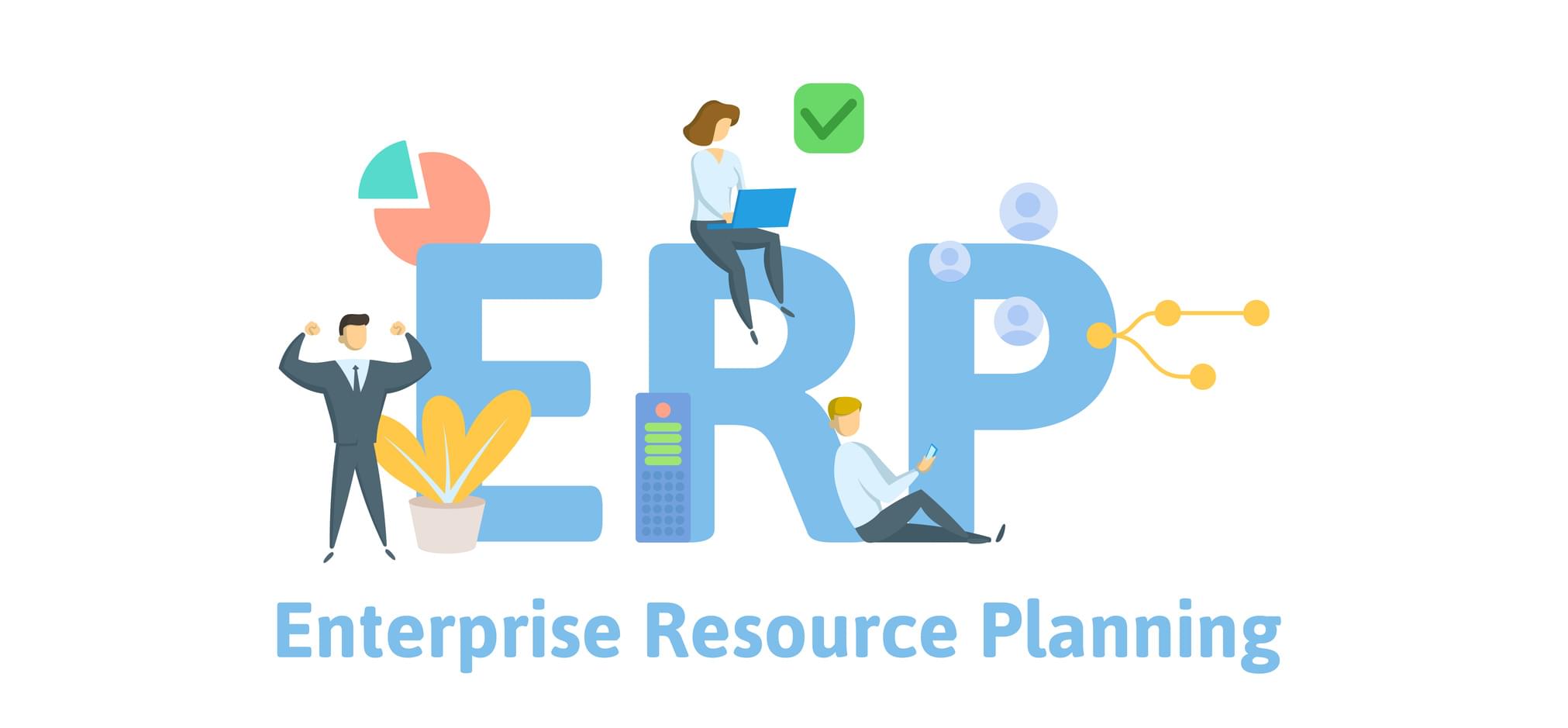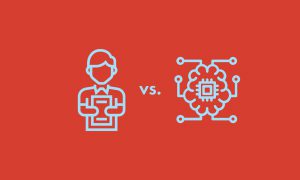Developing an ERP system is not an easy task. And though it is impossible to release 100% bug-free software, you should aim for perfection, which is no critical bugs in production. It’s time to learn how to test an ERP system – what types of testing to apply and what tools to use.
Let’s start with the definitions.
What is ERP?
ERP is an abbreviation for Enterprise Resource Planning. It is a software system meant to increase the efficiency and productivity of a company’s employees by simplifying workflows and processes.
The software considers numerous business situations and functional scenarios to integrate people from different departments through online databases, automated workflows, etc. ERP system testing aims to verify that the software works as supposed: it has the intended features, performs well, is secure, is understandable for users, etc.
So, we are through the basics, and it’s time to dive deeper into the nuances of ERP system testing.
Why Is ERP Testing Essential?
As with any other kind of software, it is essential to make sure that an ERP system is well-designed and doesn’t have critical bugs before a company releases it.
ERP systems have a complicated logic and multi-layer structure with tons of workflows and a variety of user roles. In addition to bugs in features, this kind of software is prone to having bugs in logic.
In particular, it is significant to check all the roles, configurations, and access levels so that the information managed by every department remains in place and confidential. Then come sharing and approvals that enable seamless communication between different departments.
The software of poor quality is always irritating. In the case of an ERP system, quality is even more critical. If a single workflow doesn’t work, it puts the entire enterprise at risk. The software fails to perform its task – simplify the working processes. Or even worse: it can stop the work of the entire enterprise.
If a system lags and offers slow performance, it creates more obstacles than opportunities for efficient cooperation. The frustrating interface has the same effect: users will spend more time figuring out how the thing works than coping with their tasks.
Both cloud-based and on-premise ERP systems require careful close checkup. Without proper testing, the implementation of a product is at risk. It is crucial to check how office software behaves in different environments. Otherwise, one party will be unable to expand a client base, while the other party won’t be able to use a product due to technical issues.
So basically, we can narrow down the ‘must-test’ arguments to the following list:
- The quality assurance process verifies the expected functionality and performance.
- Testing significantly reduces the implementation time.
- A software product of such complexity should come with minimum defects so they don’t stack up exponentially in the future.
- Both a buyer company and a supplier can be certain that all the processes inside the system are secure.
Types of Testing to Apply
Now, time to learn a bit about the types of testing a QA team should run for an ERP system. We always remind that the exact strategy and required testing activities are defined by the specifications of a particular product. This case is not an exception. Most likely, you will need to run the following types of testing:
- Smoke testing
- Integration testing
- Functional testing
- Interoperability testing
- Compatibility testing
- Performance testing
- Scalability testing
- Security testing
- Regression testing
- Acceptance testing
Again, this is rather a basic checklist than a finalized plan. We’ll briefly explain what each of them means and what aspects fall under each set of testing activities.
Smoke testing
A testing process always starts with a confirmation that a software build is stable and all the essential functionality works. That’s what smoke testing is in charge of.
A testing team can detect major defects immediately and report them to a development team. It prevents QA engineers from wasting time since flaws in the core functionality make testing advancement unreasonable (if impossible at all).
Integration testing
During integration testing, we check how different units of the software under test interact. Every ERP program encompasses numerous sub-systems. One of the main tasks of a QA team is to make sure those systems work when developers connect separate pieces into one system.
For example, a particular feature can work just fine when tested separately. However, it doesn’t guarantee that when you compile several features in a workflow, this workflow will be bug-free as well.
Functional testing
Functional testing is meant to verify the compliance of implemented features to those stated in the requirements. Simply put, during functional testing, a QA team is to check all the features of a newly designed ERP system and make sure everything functions as planned initially.
Interoperability testing
As a rule, ERP systems are tightly integrated with other software solutions. We need to confirm that a program works with other office applications: it supports attachments, such as .doc and .pdf files uploaded from a user’s PC, integrates with emails, connects to internal databases, etc. Software that should communicate with other programs but doesn’t is pretty much useless.
Compatibility testing
Another thing you shouldn’t forget about is the diversity of devices people use nowadays. ERP systems are primarily designed for PCs. Therefore, it is essential to check software behavior on different versions of operating systems and browsers. Also, it would make sense to make some core features available via mobile devices, just for emergency cases.
GUI testing
Developers should compensate for the complexity of an ERP system by giving it an intuitive interface. QA engineers should make sure that all graphical elements people use to interact with the system work just fine. Basically, GUI tests cover all the buttons, forms, checkboxes, input rows, etc. and verify that each fulfills its task, being connected to the proper features on the backend.
Performance testing
ERP system performance is as important as its features and layout, so it requires increased attention. Performance testing encompasses several types of checkups, such as load tests, soak tests, spike tests, etc. Altogether, they help to discover how a system responds to a large number of simultaneous users and find ways to optimize, in particular, loading and response time.
Scalability testing
With time, a company may require adding some new features to the system. It makes perfect sense. Enterprises change their strategies, hire new employees, adopt new software solutions. ERP systems have to keep up. Scalability testing helps to make sure that developers can extend the system in the future.
Security testing
There is probably no need to explain why an ERP system requires a proper security checkup. It usually starts with penetration testing that imitates cyber-attacks and models the behavior of hackers to reveal weak spots. Without security testing, a company risks exposing sensitive corporate data and employees’ personal data.
Regression testing
A QA team has to run a checkup after every code iteration to verify that changes haven’t affected the existing functionality – that’s regression testing. Depending on the circumstances, you can run a full or partial check, but it is essential to check at least business-critical features.
Acceptance testing
Then comes acceptance testing – the final checkup before the release. It is a part when all the stakeholders and maybe other trusted individuals can check out the first version of an ERP system ready for use. People outside the development team are more likely to give a fresh look and notice the areas that can be improved.
As a rule, these people don’t have technical expertise. And if they do, they still don’t know the details and use a product just like customers would do. So think of beta-testing as unbiased third-party expertise.
Automated Testing for ERP System Testing
You probably know test automation as a time-saver and an efficiency booster. Well, automated testing is extremely helpful when it comes to testing large applications, and clearly, ERP systems belong here.
Why is it reasonable to go for test automation during ERP development?
- Users will be working with large sets of data, and a QA team will as well. Testing of even the basic functionality and regular procedures will require a lot of time and resources if done manually.
- As the previous argument suggests, testing will turn out to be costly, either due to the time spent on it or the number of resources involved. Automation will have a higher ROI.
- ERP software consists of numerous parts. Very often, an output for one module is an input for the other module. It means there will be a lot of low-level testing activities that are actually easy and reasonable to automate (unit testing, for example).
- Choosing the right test automation framework will help to acquire highly accurate results during testing. For example, data-driven testing implies reading data from an external file. You can configure it once and forget about entering all those parameters during every testing session.
- Covering features addressing the central database by automated tests allows checking a product for security breaches quickly and effectively.
- Automation will facilitate running the regression suite and accelerate the release of updates.
Start automation with the lowest levels of software testing – unit and integration testing. It is easier to find and track defects at these stages when software architecture is less complicated.
Automated testing allows a team to cover the repetitive and time-consuming tasks and leave more time for areas that cannot be automated. Thus, you will be able to plan time and allocate resources optimally.
ERP Testing Step By Step
The more carefully you plan the QA procedures, the easier it will be to run testing. Large-scale projects require order and discipline, so make sure you have a strategy before you start working. Of course, there can be some changes on the way, especially if the development team sticks to the Agile SDLC model. A sketch step-by-step testing plan will look like this.
- Define testing goals & objectives. Decide upon the success parameters by discussing them with the stakeholders.
- Create a test plan. It should feature all the information related to successful testing process implementation – test cases, metrics, tools, environments, team & schedules, reporting tools, etc.
- Set up the test environment. That’s where you run the first checks of an ERP system and detect the majority of bugs.
- Run the tests. Start with the manual testing since it is the basis for the automation. Later, you can run manual tests in parallel to automation.
- Create test reports. Provide relevant data for the development team to review so they can proceed to bug fixing and implement improvements.
- Run beta-testing. After the initial version of the software is ready, handle it to a focus group – the company’s employees who are willing to become the first users and share their experience.
- Add final improvements. Data gathered during beta-testing will help to understand how users perceive a product and optimize it for a real audience.
- Release!
Theoretically, an ERP system is ready for release. In practice, the process isn’t always smooth – you may need to balance between the quality and the deadlines. Just remember that releasing a 100% bug-free product is impossible, so don’t get stuck on making it perfect. In this case, ‘perfect’ is close to ‘never released.’
ERP System Testing Tips
Last but not least, how to run testing effectively? For sure, the attention to detail and focus on end-users’ experience will be helpful. Here are some more points to keep in mind during testing a corporate software product:
- Don’t be in a hurry. An ERP is a complex system, and it is essential to spend sufficient time on testing.
- Always report about gaps in logic. They may become the source of security breaches or other serious bugs. Thus, it is better to discuss the changes with stakeholders as early as possible.
- Test as many configurations and user scenarios and possible. Come up with unlikely scenarios and inputs to learn as much about software behavior as possible.
- Make sure to test the product for scalability and interoperability. These aspects are as essential as software performance.
- Apply automation on the project. It will help to simplify and accelerate the QA process.
- If you don’t have a chance to run beta testing, at least don’t skip user acceptance testing. Otherwise, you risk ending up with a product that doesn’t solve any issue.
Bottom Line
Developing an ERP system is not an easy task, and testing one can be a challenge as well. Nevertheless, a well-planned strategy will help to deal with the most complicated tasks.
Start ERP system testing by studying the requirements carefully and reaching out to stakeholders with questions if something is unclear. Prepare good manual test cases so you can create an automation suit based on them later.
When it comes to corporate software, there is no such thing as too much testing. Large and complex software products require a sufficient amount of time to check them properly. And don’t forget about the audience that will use this ERP system – not all of them are well-versed in technology, and that should encourage you to inspect a variety of scenarios in detail.








